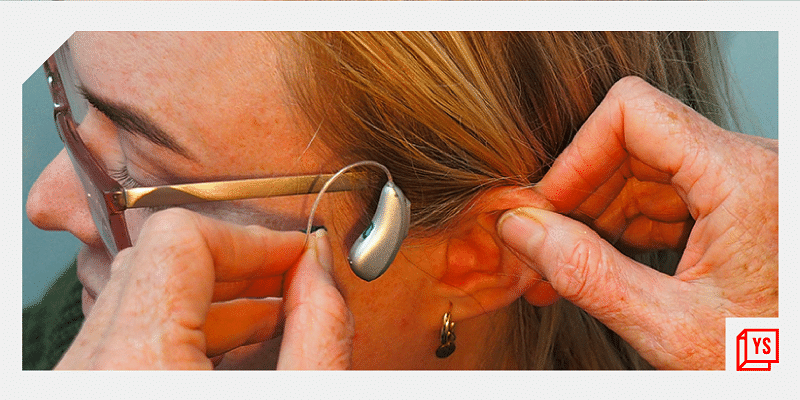A May 2022 report by MIT News talks about a startup testing a unique drug molecule that can reverse hearing loss with a new kind of regenerative therapy. The initial results are encouraging – where the improvement in people’s hearing was measured by tests of speech perception. However, there is a long road to the market, and the preliminary results from a 124-person clinical trial are expected next year. The future sounds promising.
Hearing impairment remains a persistent issue in India.
Expanse of hearing impairment in India[1]
The timeline of auditory devices’ evolution clearly shows that innovations in this space have been intermittent. They have mostly been incremental in the form of enhanced amplification, better noise cancellation and improvements in design, rather than disruptive.
Timeline of innovations in auditory devices’ space [2]
Auditory devices including hearing aids and cochlear implants have been the mainstay of treatment for hearing impairment. They reduce communication barriers, as they enable better speaking and understanding capabilities.
Hearing aids help those with mild to moderate hearing loss by amplifying the sounds, whereas cochlear implants help those with severe to complete hearing loss. They are surgically implanted devices and directly stimulate the auditory nerves, a function performed by inner ear parts in normal circumstances.
There is a wide spectrum in terms of costs when it comes to these devices.
These wide spectrums indicate that cost limits accessibility and affordability of high quality and feature-rich solutions. The market is yet to find a sweet spot that can address both quality and affordability.
There are other deep-rooted issues that act as barriers to accessibility of these devices:
1. Lack of awareness, especially, among the elderly and people based in remote areas.
2. Reluctance to get implants through surgical procedures considering the risks involved.
3. After the individual has adopted an appropriate device, s/he requires training to use it effectively. This may entail regular visits to audiologists/therapists for a few months. This rehabilitation process is a challenge for those working on daily wages. The cost burden of the repeat visits and therapist’s fees lead to a drop out of those with humble financial backgrounds.
Market growth for hearing aids and implants[5]
But there is a silver lining to this story. The global hearing devices market is well primed for innovation. India is not far behind with > $300 million growing at a CAGR of nearly 5 percent. [6] Factors driving this growth are increasing incidences of loss of hearing and advances in technology and its acceptance.
A few entrepreneurs in India have walked the extra mile to bring impact-led innovations to those who need them the most.
Innovation landscaping of hearing impairment space
Landscaping of the solutions makes it clear that there is still scope for innovation in the space of devices for correction of hearing. These devices should solve the problems of affordability, quality of product/service, accessibility, low adaptation and rehabilitation needs.
Unfortunately, innovators can hardly leverage these opportunities due to the absence of an enabling ecosystem that can take their solutions from the lab to the market. While government funding is available for research and development of Assistive Tech solutions and private capital is forthcoming for scaling up, the gulf in between sees many startups struggling to survive.
An innovation engine:
Working with entrepreneurs in the sector for the past five years, Social Alpha has designed a toolkit approach to provide them holistic support.
1. Laboratory with up-to-date infrastructure for quick prototyping and product development
2. Blended financing model – startups have used these tools to access new markets. For instance, startups could use funds to subsidise the rates of assistive devices for persons with disabilities who have low affordability
3. Customised go-to-market strategy through hands-on strategy workshops
4. Networks and mentoring to help startups get their products clinically validated
In December 2021, Social Alpha in collaboration with SBI Foundation had launched a challenge for startups called ‘Techtonic – Innovations in Assistive Technology’. Under this program, four early-stage innovators were supported with funding, laboratory infrastructure, mentorship, and network with industry partners. This will help their innovations to move forward on Technology Readiness Level (TRL) and enhance market readiness. Such interventions are crucial in sectors like hearing impairment where innovations are essential, but the market is fragmented and has a low-paying capacity.
Conclusion
Hearing impairment not only hinders personal growth, but also creates financial strain on the families of the disabled. It has cascading effects in both children as well as adults.
Cascading effect of hearing loss in children[7]
Cascading effect of hearing loss in elderly[8]
Innovations if rightly nurtured have the potential to break these chains and bring inclusivity.
1. https://nmji.in/prevalence-of-hearing-loss-in-india/ ↑
2.http://beckerexhibits.wustl.edu/did/timeline/ ↑
3.https://www.quora.com/What-is-the-best-hearing-aid-price-in-India ↑
4.https://www.practo.com/health-wiki/cochlear-implant-india/300/article#:~:text=Cost%20of%20Cochlear%20Implant%20in,4%2C30%2C000 ↑
5.http://docplexus-insights.com/featured/hearing-devices-market/ ↑
6.https://www.asdreports.com/market-research-report-523281/hearing-aid-market india#:~:text=India%20hearing%20aid%20market%20size,4.56%25%20from%202020%20to%202026 ↑
7.https://www.who.int/news-room/fact-sheets/detail/deafness-and-hearing-loss ↑




![Read more about the article [Startup Bharat] This home décor startup is keeping Indian handicrafts alive by working with artisans from remote parts of India](https://blog.digitalsevaa.com/wp-content/uploads/2022/01/ImageBranding-Amisha2-1642074728191-300x150.png)





